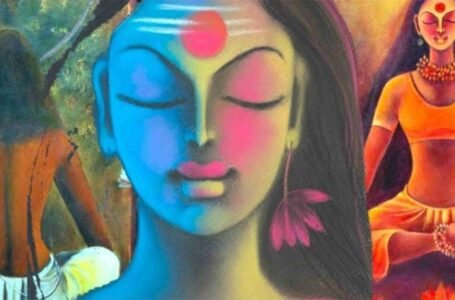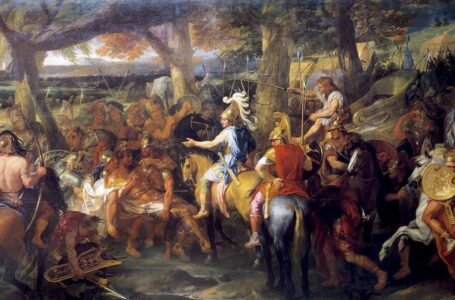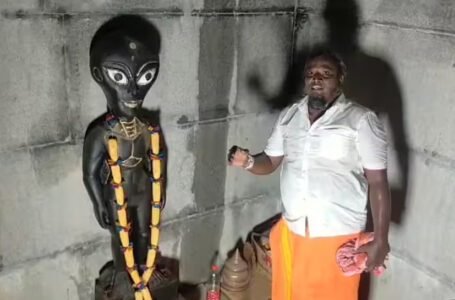Tripura Sundari: The Beautiful Goddess of the Three Worlds
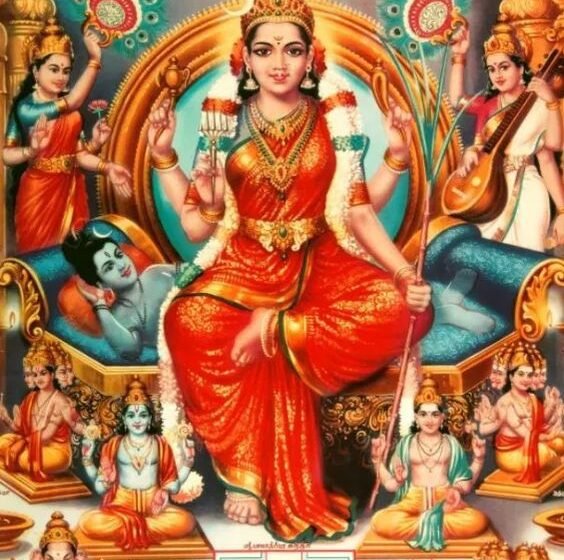
Tripura Sundari, is the third most revered goddess in the ten Mahavidyas of Shaktism, a female goddesses’ oriented sect of Hinduism and Sri Vidya traditions, where she is considered as the most beautiful and graceful. The word Tripura once broken down can be interpreted as tri meaning three and pura translating into a city, the word as whole meaning ‘three cities.’ Whereas the word Sundari means beautiful, denoting to the goddess as the ‘beautiful goddess of the three cities or worlds.’ Her name can also mean as the goddess who is beautiful in all the three states of consciousness. Although Tripura Sundari is her most common name, she is also known as goddess Lalita, Rajarajeshvari, Kamakshi and Shodashi which means the one who is sixteen years old.

In Hinduism it is largely believed that Tripura Sundari is the highest consciousness as she is above the Trimurti consisting of Lord Brahma, Lord Vishnu and Lord Shiva as she looks after the creation, preservation and destruction of the universe. Her importance above the Hindu trinity gods is due to the fact that according to Tripura Upanishads, Tripura Sundari existed before the creation of the universe and it was her who created the Trimurti to govern the creation, preservation and destruction of the cosmos.
Tripura Sundari’s beauty and grace is the most celebrated attributes of her in Hinduism. Her depictions in scriptures, hymns, and iconography showcase her as a goddess who possesses supreme beauty, divine grace and wisdom. In her depictions she is often portrayed as a sixteen year old girl that signifies her eternal youth and the fullness of beauty. Her complexion is said to be as the same colour as the rising sun, which is a gorgeous bright golden hue that stands for purity, auspiciousness, and the dawn of enlightenment.
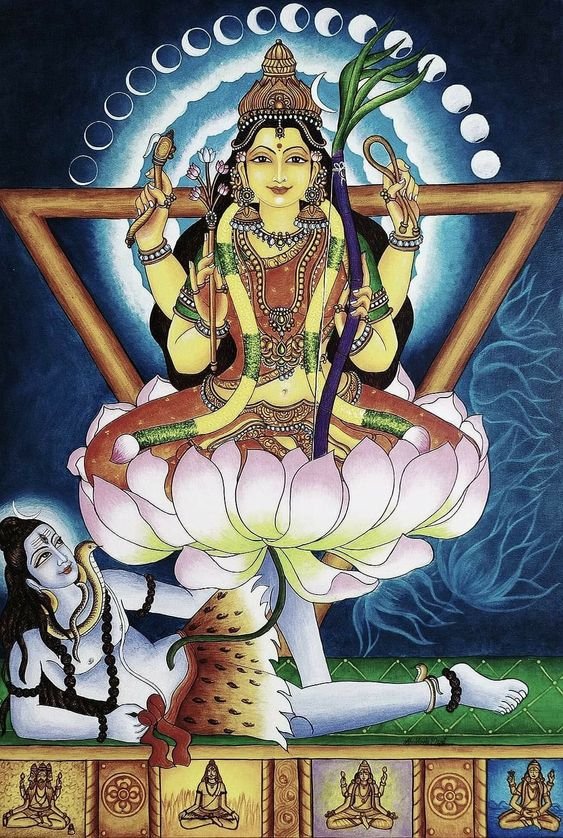
This beauty of hers which is described as radiant is both mesmerizing and captivating, and is believed to be a reflection of divine grace and love for the devotees of the goddess. In her iconography and sculptures, Tripura Sundari is always seen adorned with extremely beautiful garments and jewellery. Her bangles, anklets, crown acts as a synonym for one of her name Rajarajeshvari that stands for her role and status as the queen of the cosmic universe. On the other hand the beauty of her garments signifies the elements of prosperity, wealth and everything good the goddess represents.
The most renowned and important legends related to the goddess Tripura Sundari is of the battle between her and the demon Bhandasura. The gods sought help from Tripura Sundari after the demon had caused chaos on earth and was unlikely to stop from creating further imbalance. Tripura Sundari at the call of the gods emerged as radiant and splendid from the cosmic bindu of the Sri Chakra.
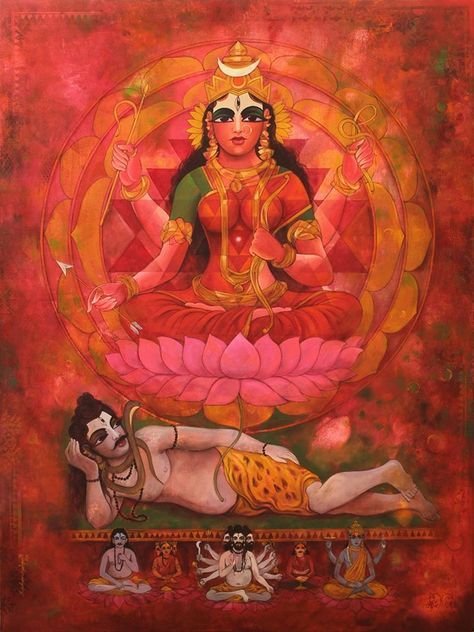
It is believed her beauty was so captivating and overwhelming that it instilled fear in the heart of the demon, whilst the gods were left in awe of the goddess beauty inspiring devotion within them. In the end she defeated the demon Bhandasura with the help of her divine beauty and power, restoring the cosmos back to its previous order. Similarly her beauty is expressed in the hymn of Lalita Sahasranama, wherein her thousand names celebrates different attributes of her beauty and grace. Her names like Chidagni Kunda Sambhuta, and Bhairavi present to the devotees her nature that is far more complex due its amalgamation of fierce power and radiant beauty.
In Shri Vidya traditions, Tripura Sundari is worshiped in the form of Shri Yantra, a geometric design that represents the divine feminine energy, in particular that of the goddess Tripura Sundari. The Shri Yantra is a network of interlocking matrix of geometric figures, circlesm and triangles worshipped in Hinduism, Tantra, and Shri Vidya practices. The Shri Yantra is believed to be a powerful symbol as it embodies the cosmic energies and the interconnectedness of the universe. The symbol’s structure or the diagram has nine interlocking triangles which come together and form a central point called the bindu.
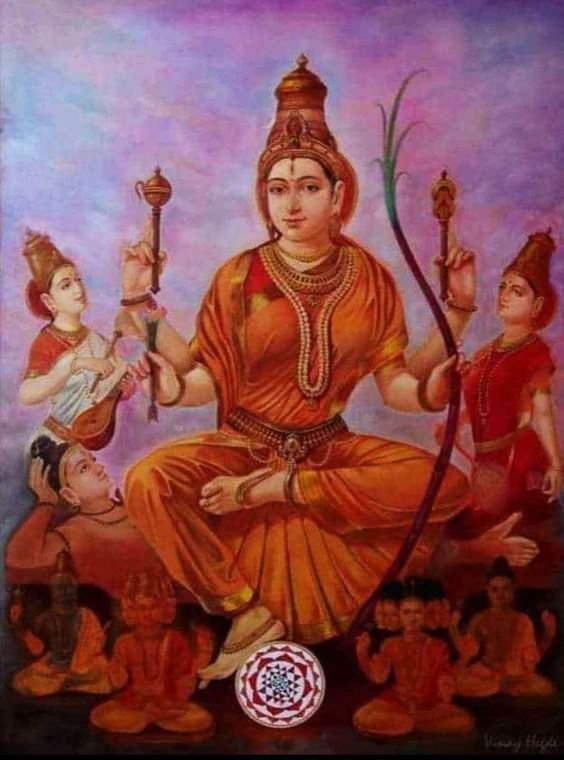
Tripura Sundari is the goddess of the three cities or worlds, and the three sides of the triangles represent the interconnection of these three worlds, symbolising the presence of Tripura Sundari in consciousness of these cosmic universes. It is also believed that the goddess emerged from the bindu which is the central point in the Shri Yantra, signifying the goddess power over all the three worlds. Bindu in the Shri Yantra is a symbol of ancient cosmic energy, which affirms to the belief of Tripura Sundari’s existence as ancient and of existence before the universe was created.
The connection between Tripura Sundari and the Shri Yantra goes back to the Tantric traditions and philosophy. The worship of the goddess can be found in the early Tantric texts and traditions that came in India around 6th century CE. Tantra is a mystical, esoteric tradition within Hinduism that emphasizes on the idea that the physical and spiritual worlds are interconnected and that liberation can be achieved through the worship of the divine feminine. Tantra traditions focus more rituals, meditation, chanting of mantras, studies and knowledge. In Tantric philosophy the concept of Advaita is of importance. This concept states that the individual soul and the ultimate reality are one. Tripura Sundari, as the supreme goddess, is believed to be the example of this concept; since she is both the manifest world of Samsara and the unmanifest absolute of Nirvana, possessing all kinds of dualities and opposites. She is also believed to be the supreme Shakti within Shaktism that is the divine feminine energy which balances the divine masculine energy of Shiva. This union is the core of Tantra tradition as it symbolizes the union of consciousness and energy, which is reflected in the upward and downward pointing triangles of Shri Yantra.
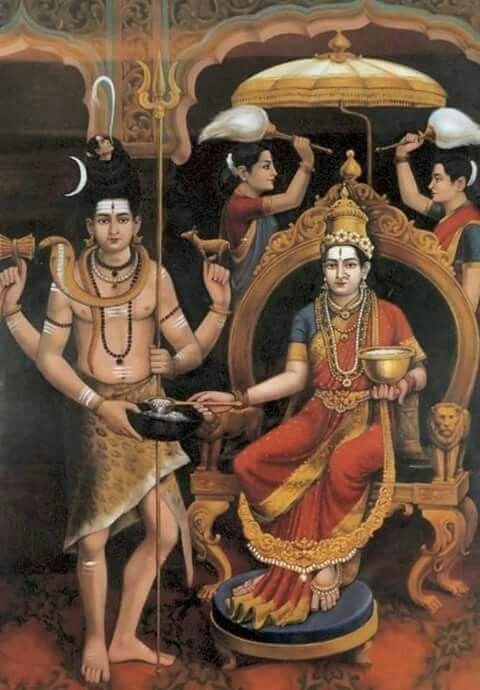
Tripura Sundari is directly worshipped through the Shri Yantra as the central point or bindu in the symbol is a direct representation of the goddess herself. The worship of the Shri Yantra includes meditation on the symbol, chanting of mantras and ritual offerings. Meditating on the Shri Yantra helps the devotees to connect with the goddess’s energy which guides them towards spiritual awakening and understanding of the cosmic universe. Although meditating on the Shri Yantra is significant to the goddess’s worship, chanting of mantras dedicated to Tripura Sundari is too an essential aspect of her worship.
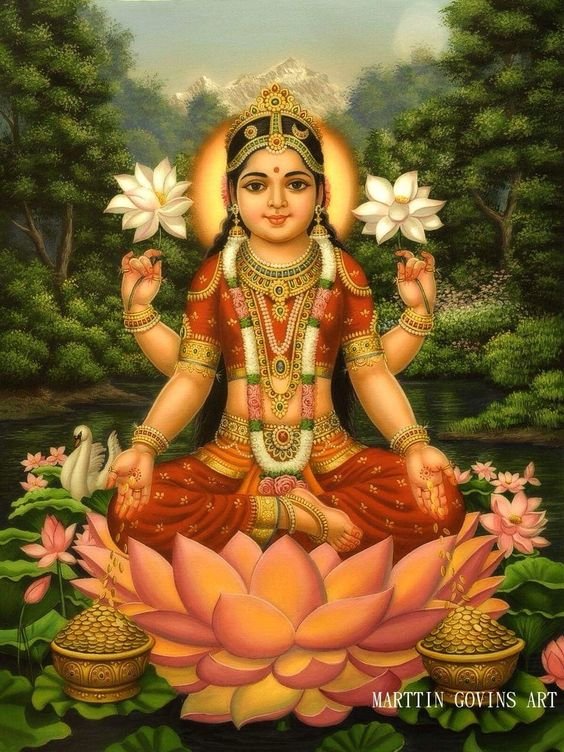
The Lalita Sahasranama, a sacred text consisting of the thousand names of the goddess is mainly important. Each name reflects a different attribute of Tripura Sundari, and it is believed amongst the devotees that reciting these names will invoke her presence as well as blessings. Other texts related to the goddess include the Lalita Trishati, wherein three hundred names of the goddess are mentioned, and the Lalitopakhyana, is another important texts that narrates the goddess’s exploits and glories. The Brahmanda Purana containing the hymns of Lalita Sahasranama is one of the earliest and most important texts that advices on the worship of Tripura Sundari. The Tripura Rahasya on the other hand is a prominent text in the Shakta tradition that focuses on the philosophical and spiritual teachings of the goddess. This text is ascribed to the sage Dattatreya and is divided into three sections namely: the Mahatmya Khanda, the Jnana Khanda, and the Charya Khanda. Similarly, several Shakta tradition Upanishads also mention the goddess and her worship.
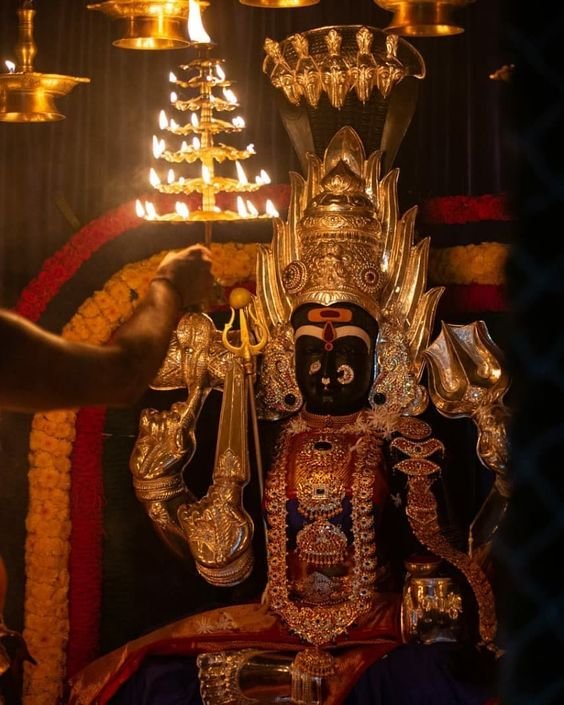
Tripura Sundari, thus the epitome of beauty, grace and fierceness is the supreme goddess of the three worlds and the three conscious states of a mind. As the symbol supreme beauty and consciousness she is a revered deity of Tantra traditions. And through her worship by meditation on the Shri Yantra and chanting of mantras and her thousand beautiful names, she guides the devotees towards spiritual enlightenment, bestowing upon them divine blessings of love, grace, prosperity and wealth.
